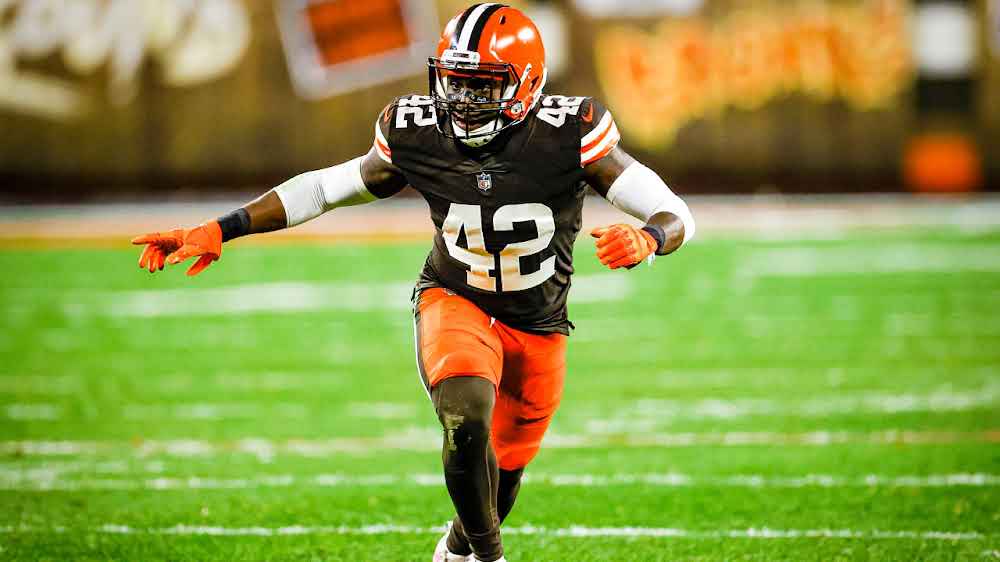
Against the Steelers, Dorian Thompson-Robinson displayed his limitations, but he also revealed what was possible: Within the Figures
Ohio’s Cleveland Though it wasn’t flawless, the offense led by Dorian Thompson-Robinson managed to secure a vital division victory on Sunday, improving the Browns’ record to 7-3 overall.
For the majority of the day, the Browns’ offense was completely immobilized. Week 11 saw the second-highest drop rate (20.6%) among Browns receivers, suggesting a lack of coordination on the part of the passing offense. Even though DTR’s 48-yard game-winning drive was a very promising conclusion, the game was mostly played with very poor offensive performance.
We can compare what was different with DTR at the helm this time around to his first start against Baltimore in order to get a glimpse of what the Browns offense might look like going forward.

Ravens vs. Dorian Thompson-Robinson, Week 4
3.18 seconds is the average throw time.
8.3 planned air yards for each attempt at a pass
60.9% is the anticipated completion percentage.
Steelers vs. Dorian Thompson-Robinson, Week 11
2.34 seconds is the average throw time.
3.3 planned air yards for every attempt at a pass
67.3% predicted completion rate (Regarding the statistics) — Average throw time: the typical amount of time that passes between the snap and the quarterback’s ball release; Per pass attempt, intended air yards (per Sports Info Solutions): the average intended yardage per pass downfield, whether or not the pass was completed; Anticipate
completion percentage: Based on the amount of separation the receiver creates, this statistic estimates the probability of completing any given pass using player tracking data from the NFL’s Next Gen Stats. The likelihood that the pass will be completed increases with the receiver’s openness.)
The game plans used in the Ravens and Steelers games differed drastically, as the numbers demonstrate. Just hours before kickoff, DTR was thrust into the starting lineup against Baltimore for his first career start. Prior to kickoff, everyone believed Deshaun Watson would start at quarterback, and Stefanski’s game plan reflected that belief.
The game plan was more aggressive: DTR intended to gain more than 8 yards per pass attempt, and his average throwing time was over 3 seconds. Because Stefanski’s game plan called for more difficult downfield throws, his expected completion percentage was closer to 60%.
DTR’s first career start was never really given a fair chance. Stefanski designed the offense with the assumption that Watson would start at quarterback. The passing offense therefore appeared very different when he had a full week to prepare knowing that DTR would start against the Steelers.
DTR’s intended air yards dropped from 8.3 to just 3.3 on average, his expected completion percentage increased noticeably, and his average time to throw decreased by more than a second. Stefanski was able to plan the offense this time around with his rookie quarterback in mind. He highlighted how easy percentage throws, screens, and a quick passing game made life easier on DTR.
This extremely cautious approach led to an offense that could only score by slogging down the field. In Week 11, the Browns’ 6.8% pass completion percentage was the least explosive of any offense. The Browns can’t be satisfied with their mediocre offensive output if they want to go deep into the playoffs. With this formula, they could defeat the NFL’s Pittsburgh Steelers, but not the top teams they hope to play in a few months.

Using DTR’s advantages as a runner is one way to breathe new life into this stale offense. He has only carried the ball seven times in his two starts with the Browns, but even in this small sample size, the strategy has shown to be effective.
Stats on Dorian Thompson-Robinson’s running
6.3 yards per try (ranked second among starting quarterbacks)
Broken tackle rate (3rd): 28.6%
42.9% of plays were “very positive” (first)
(For the purpose of this discussion, an EPA value of 1 or higher is considered “very positive.” Expected points added, or EPA, measures the play’s success in terms of getting closer to scoring points by taking into account down, distance, and field position both before and after the play. Basic statistics don’t account for the fact that a 4-yard gain on third-and-three is worth more than a 4-yard gain on first-and-10.)
QBs with exceptional athleticism, such as Josh Allen and Lamar Jackson, will soar to great heights despite rocky beginnings to their careers because they were able to rely on their mobility as their passing development progressed. Although Jackson and Allen were not reliable passers during their rookie seasons, they were both potent rushers who kept their respective offenses running.
Even though DTR lacks these guys’ level of athleticism, he is still very athletic. To fully utilize DTR’s mobility, Stefanski needs to use more bootlegs, moving pockets, and quarterback run concepts.
The Browns passing offense under DTR appears to have little chance of success despite the statistics that are currently available, but the quarterback position remains a significant unknown, something that Browns fans have become accustomed to over the past few decades.

However, now is the moment for them to welcome the unknown and even get excited about it. With just two games under his belt, DTR has room to grow. Since he entered the building, the Browns have made it known that they are fully behind their fifth-round rookie; in fact, they were so confident in him that they traded Josh Dobbs to make room for DTR as the backup.
The Browns, with their historically significant and record-breaking defense, are deep in the AFC playoff hunt. The Browns will be playing games well into January if they can recreate Thompson-Robinson’s magic from the preseason.
Malachy Gardner works as an independent football analyst and freelance reporter. He analyzes the Browns using statistics and film analysis on his “Dawg Pound Dish” YouTube channel. His work is available here.







